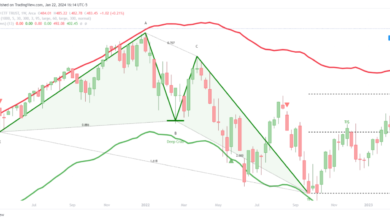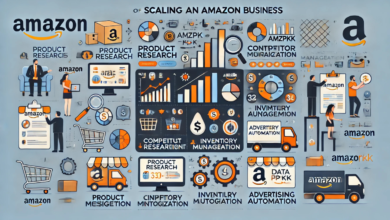In personal finance and investments, phrases and buzzwords often emerge, offering new ways to think about money and wealth management. One such word is “My Money Would Be NYT.” While it may sound obscure at first glance, this phrase holds significant implications for how we approach our financial strategies and investment decisions. This article will explain what “My Money Would Be NYT” means, explore its connection to personal finance, and discuss how it can influence investment decisions.
Understanding the Phrase: “My Money Would Be NYT”
To understand the meaning behind “My Money Would Be NYT,” we first need to break down the components of the phrase. “My Money” refers to an individual’s wealth or financial assets. It reflects your economic status, investments, and the choices you make regarding your money. “Would Be” suggests a conditional state, as if you’re considering a hypothetical situation. Finally, “NYT” is a well-known abbreviation for The New York Times, one of the world’s most respected and influential newspapers.
What does the phrase “My Money Would Be NYT” suggest? It is a metaphor for making investment decisions that are so astute and so well-informed that they could be featured in one of the leading financial publications, such as The New York Times. It suggests a level of strategic thinking, awareness, and financial acumen that would impress even the most esteemed financial experts.
This phrase calls for elevating your financial literacy and approach to investing. It emphasizes making thoughtful, informed decisions that reflect current market conditions and long-term financial goals. In the context of investments, it highlights the importance of following trends and understanding their rationale.
The Relevance of ‘My Money Would Be NYT’ in Today’s Investment Landscape
In the fast-paced investing world, individuals often grapple with various factors: fluctuating markets, volatile economic conditions, and overwhelming information. For many investors, the goal is not just to make money but to make informed decisions that will yield long-term financial stability.
Here’s how adopting a “My Money Would Be NYT” mindset can shape your investment strategy:
- Informed Decision-Making
One of the key aspects of the “My Money Would Be NYT” mindset is the emphasis on information. The New York Times is known for its in-depth research, detailed analysis, and factual reporting. When you approach investing with the idea that your decisions could stand up to the scrutiny of such a publication, you are more likely to make informed, well-researched choices. This could mean reading financial news, analyzing reports, and seeking expert opinions before committing funds to any particular investment.
- Long-Term Focus
The phrase suggests that you are not simply reacting to short-term trends. Instead, you are taking a long-term view of your investments. The New York Times often covers investment strategies focusing on sustainable growth rather than speculative ventures. This aligns with an approach emphasizing diversification, risk management, and long-term planning.
- Balanced Risk Approach
A key to successful investing is balancing risk with reward. The phrase “My Money Would Be NYT” hints at a strategic, calculated approach to risk. Your investment decisions should not be based on impulsive moves or market hype. Instead, they should be grounded in thorough research, an understanding of market trends, and an awareness of the potential risks and rewards involved.
- Ethical Investing
Being featured in The New York Times also suggests a degree of ethical responsibility. Investments that attract positive media attention often align with socially responsible practices. The growing interest in Environmental, Social, and Governance (ESG) criteria is a prime example. Investors are increasingly drawn to opportunities that offer financial returns and contribute to social and environmental well-being.
- Transparency and Accountability
Transparency is a key principle in financial journalism, especially in trusted publications like The New York Times. Investing means choosing investments where you can easily access information about the companies, assets, or funds you invest in. This could include annual reports, financial statements, and market analyses. When you invest to have your strategy featured in a leading publication, you ensure that your investments are grounded in verifiable information.
How ‘My Money Would Be NYT’ Affects Your Investment Decisions
Now that we understand the mindset behind “My Money Would Be NYT,” let’s explore how this concept can influence investment decisions. Below are several areas where this approach can be particularly beneficial:
- Stock Market Investments
If you’re investing in the stock market, the “My Money Would Be NYT” mindset can help guide your decisions when selecting companies with strong fundamentals. Rather than jumping on the latest stock tip, you’ll focus on companies with long-term growth potential, strong management, and a sustainable competitive advantage. This means researching financial statements, understanding the business model, and considering macroeconomic factors that could affect the company’s success.
- Real Estate Investments
The “My Money Would Be NYT” approach to real estate involves carefully evaluating properties based on long-term value rather than short-term gains. This could mean investing in properties in emerging markets, considering the potential for appreciation, and considering factors like local infrastructure development and demographics.
- Alternative Investments
Alternative investments, such as private equity, venture capital, and cryptocurrencies, are often more volatile and require excellent expertise. With the “My Money Would Be NYT” philosophy, you would approach these high-risk investments cautiously, conducting in-depth research and only committing funds you can afford to lose.
- Retirement Planning
When planning for retirement, adopting the mindset that your strategy should be worthy of financial media attention can help you make smarter decisions. This includes focusing on low-cost index funds, diversifying your portfolio, and taking advantage of tax-advantaged retirement accounts like IRAs and 401(k)s.
- Diversification
A well-diversified portfolio is one of the best ways to manage risk while striving for growth. By embracing the “My Money Would Be NYT” mindset, you are more likely to diversify your investments across asset classes, sectors, and geographical regions. This helps reduce the risk of any investment harming your portfolio while maximizing the growth potential.
Key Benefits of Adopting the ‘My Money Would Be NYT’ Mindset
- Enhanced Financial Literacy By striving to make investment decisions worthy of being highlighted in a prominent publication, you naturally increase your financial literacy. You understand how market conditions, company performances, and global events impact your portfolio.
- Better Risk Management With more knowledge and understanding, you can better manage risks. You’re more likely to avoid impulsive decisions and make calculated moves that align with your long-term financial goals.
- More substantial Investment Returns Informed and strategic choices often lead to better returns. Adopting the principles behind the “My Money Would Be NYT” mindset allows you to set yourself up for a more secure financial future.
- Increased Accountability When you hold yourself to the standard of being featured in The New York Times, you are more likely to stay disciplined in your investment choices. This Accountability encourages thoughtful decision-making and discourages risky, speculative behavior.
- A Reputation of Financial Savvy Lastly, adopting this mindset can enhance your reputation as an intelligent, ethical investor. Over time, as you build a portfolio of well-researched and sustainable investments, you’ll gain confidence in your financial abilities and earn the respect of others in the investment community.
Conclusion
“My Money Would Be NYT” encapsulates a philosophy of making well-informed, strategic, and ethical investment choices. It emphasizes the importance of being thoughtful, cautious, and diligent in financial decision-making, focusing on long-term success rather than short-term gains. Adopting this mindset makes you more likely to build a diversified portfolio, manage risks effectively, and achieve more substantial financial returns. Ultimately, this approach can set you on the path to financial independence while ensuring that your investments align with your financial goals and ethical values.
FAQs
1. What does “My Money Would Be NYT” mean? The phrase refers to making financial decisions that are so well-researched and smart that they could be featured in The New York Times for their astuteness. It emphasizes a thoughtful, informed, and strategic approach to managing money.
2. How can I apply the “My Money Would Be NYT” mindset to my investments? By conducting thorough research, focusing on long-term growth, balancing risks, and being transparent in your financial decisions, you can make better investment choices.
3. Does the “My Money Would Be NYT” philosophy mean avoiding high-risk investments? While it doesn’t mean avoiding risk altogether, the philosophy suggests taking a more calculated approach to high-risk investments. Thorough research and understanding the risks involved are key to making informed decisions.
4. What are the benefits of having a long-term focus on investing? A long-term focus helps you ride out market volatility and capitalize on compound growth. It reduces the likelihood of making impulsive decisions based on short-term market trends and encourages a more stable approach to wealth-building.
5. Can adopting the “My Money Would Be NYT” mindset improve my financial literacy? Yes, embracing this mindset encourages you to learn more about markets, investments, and economic strategies, thus enhancing your overall financial literacy.




